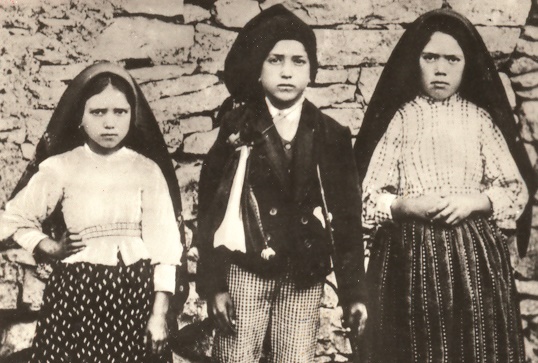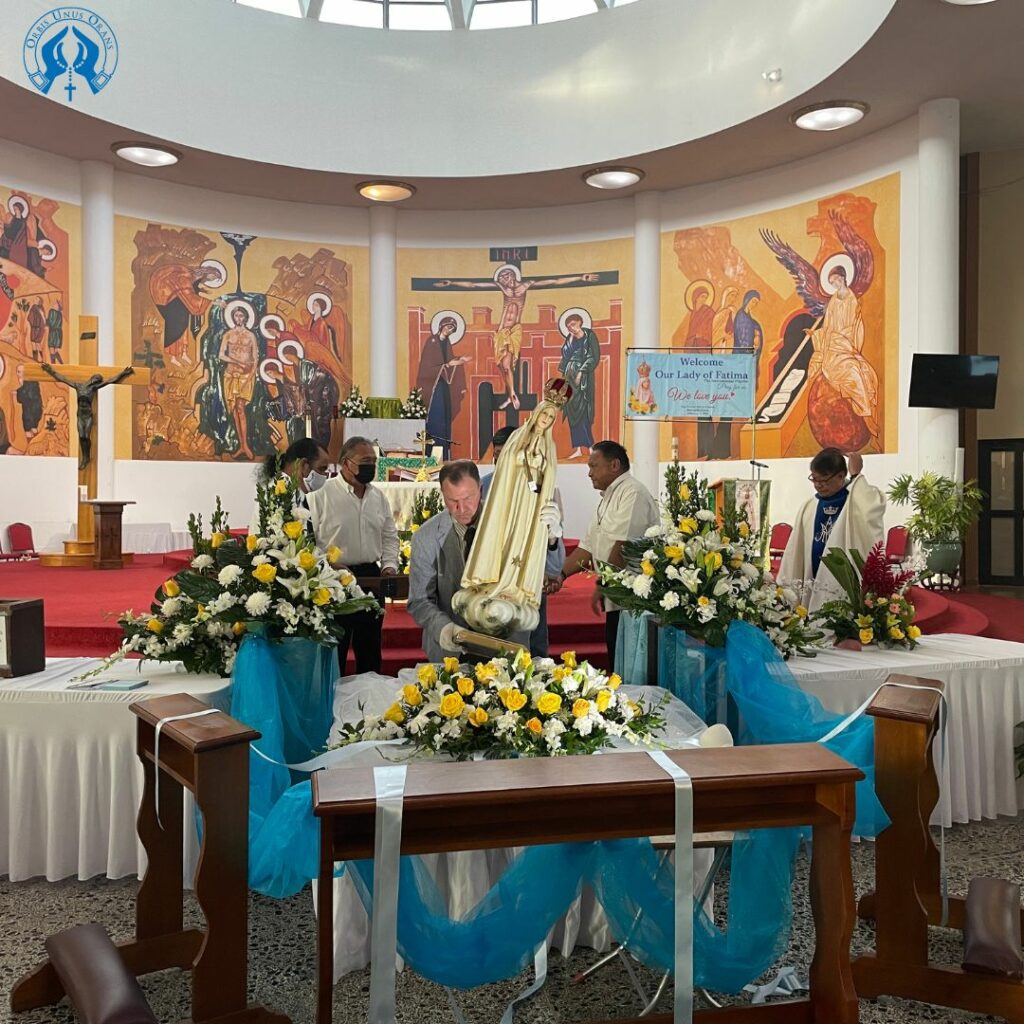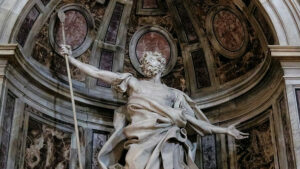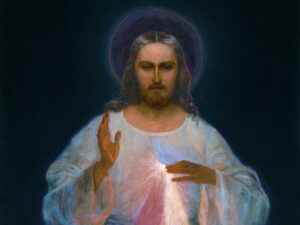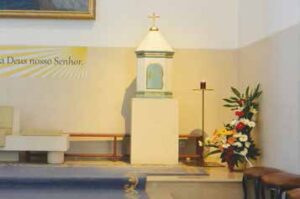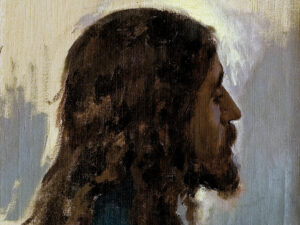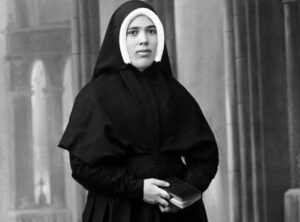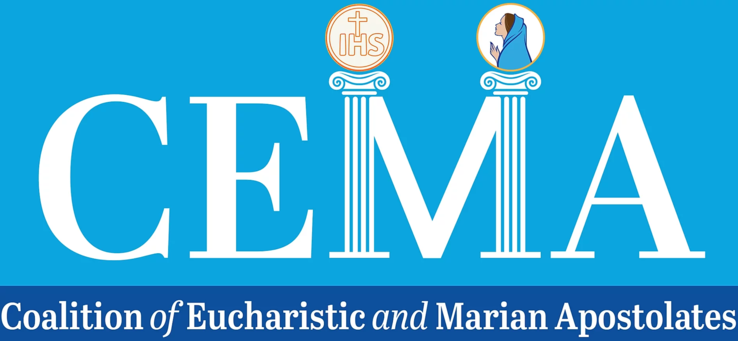by Larry Maginot –
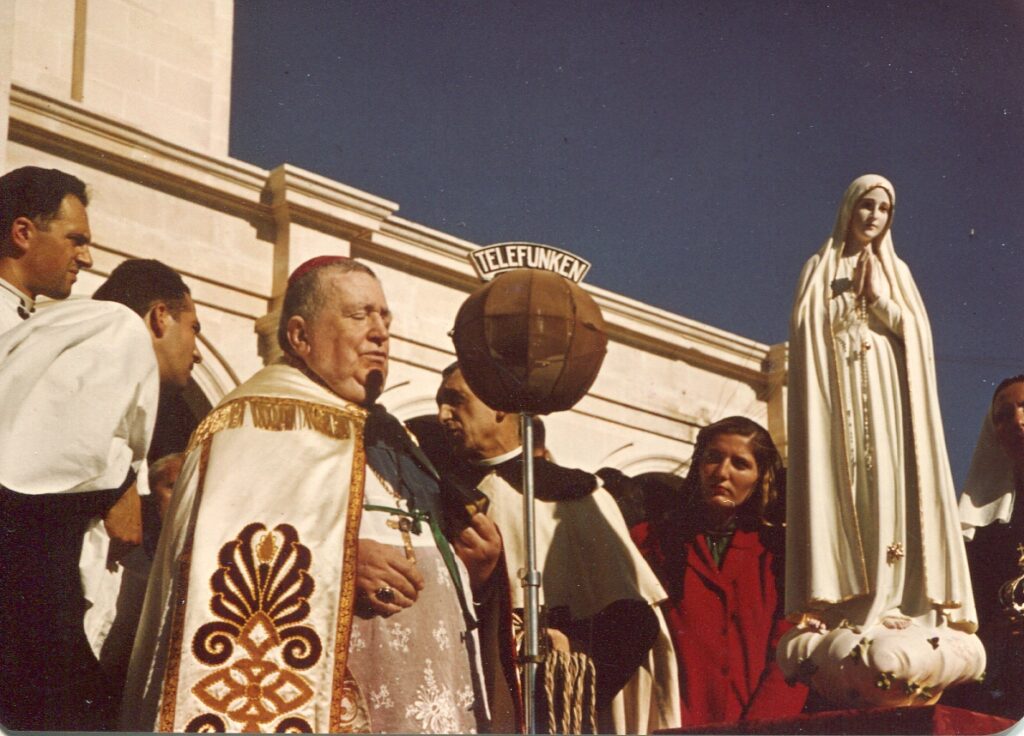
In a 1952 radio broadcast, Pope Pius XII expressed this poignant observation, “In 1946, we crowned Our Lady of Fatima as Queen of the world, and the next year, through her pilgrim image, She set forth as though to claim Her dominion, and the miracles She performs along the way are such that we can hardly believe our eyes at what we are seeing.”
A number of seemingly disconnected events converged in 1946 to form a move of the Holy Spirit that launched like a tsunami of prayer and devotion out from Fatima to the whole world. Now it is true that the Spirit, like the wind, “blows where it wills” (Jn 3:9), but this wind cries “Mary,” who has a face of compassion, eyes of tenderness and a form of confident and trusting prayer.
In 1946, as the world was recovering and rebuilding from the “second more devastating war” and observing the expansion of an ever more aggressive Russian empire, both of which were prophesied by Our Lady to the children at Fatima, Sister Lucia had returned to her hometown for the first time since leaving as a 14-year-old to enter a boarding school of the Dorothean Sisters. Until this time, she had not seen the statue of Mary that stands at the site of apparitions and is regularly carried in procession at Fatima.
This statue was the first statue of Our Lady of Fatima sculpted by the renowned Portuguese sculptor José Thedim. Upon seeing this statue, Sister Lucia remarked, “It is a good likeness, but there are a few details that aren’t quite accurate.”
Those details referred not to Our Lady’s demeanor, but to her attire (the cuff of the sleeves, the trim of the mantle, the ornament upon the necklace, etc.). Word about this comment reached the bishop of Liera-Fatima, who then arranged for the artist to meet with Sister Lucia to have him work on another statue based more precisely on the her description of Our Lady. During this same period a Portuguese Catholic young adults group approached the bishop with a request for a pilgrim image of Our Lady of Fatima to help spread the message and devotion. The bishop promised them that the new statue the artist was working on would become that pilgrim image.
Meanwhile, John Haffert, who was in Fatima to providentially collaborate with Sister Lucia to parse out the precise requests that Our Lady was asking of everyone (which later became known as the Blue Army pledge), heard about the plans for a pilgrim statue. Mr. Haffert approached the bishop to discuss having a second pilgrim image made, since, as he told the bishop, “the world is too big for just one statue,” and that he could raise the money for the commission of this second statue. The bishop promised his blessing, and so the following year on May 13, 1947 (the first) and on Oct. 13, 1947 (the second) of the pilgrim statues of Our Lady of Fatima were blessed and sent out on world pilgrimage.
One of the most common questions I get while on tour with the pilgrim image is, “How many statues are there?”
The answer to that question is complicated, as from the first year the answer was two. And though there were two, both were referred to as the International Pilgrim Statue. The answer has only become more complicated as these original two have further inspired many others assigned to nations or regions, dioceses or parishes, apostolates and prayer groups, attesting to that tsunami of prayer and devotion that has been unleashed from Fatima.
There are certain blessings that may be particularly unique to the second statue, the one commissioned by and entrusted to Mr. Haffert. In 1952, Sister Lucia spent an entire night with this one in her cloistered convent cell. After that night, she told Mr. Haffert directly that this one was the best likeness of Mary she had ever seen. We have been told that José Thedim carved much of it on his knees in an attitude of prayer. He had known from the very beginning of this work that this statue would be a pilgrim and would have to be able to endure all the stresses of being constantly moved around. He chose to make this one of mahogany, a heavier more durable wood than his preferred cedar. We know that the other statue has been retired since the early ‘90s, and when a request is made for it to the bishop, a copy is sent in its place.
But the feature about the image, which I believe is the most remarkable, is her face and eyes. There is something that is inexplicable about her countenance. Her expression cannot be defined. She seems to be alive there, hidden only by a very thin veneer. Sometimes she appears joyful and other times sorrowful, but without any explicit featural change that anyone can point to. The only explanation that can be given is that when the bishop blessed her, he prayed that Mary’s presence would accompany her.
Our Lady’s visits are helping to counteract the offenses committed against the Immaculate Heart of Mary, as expressed by our Lord to Sister Lucia, particularly those involving the rejection and dishonoring of her images. It is so common to see people coming from a close visit of praying to her with tears in their eyes; and when she is royally processed into a church filled with people awaiting her arrival, the emotion is uncontainable.
This is not a testament to mere emotionalism, but to the human reaction people so readily feel when Our Lady is rightfully honored and venerated. Her arrival and presence is a ceremonious reminder to all of the fullness of the faith that she treasures and carries hidden within the deep recesses of her Immaculate Heart. This “light shines in the darkness, and the darkness has not overcome it.” (Jn 1:5)
Lawrence Maginot is one of the statue custodians for the World Apostolate of Fatima USA Pilgrim Virgin Statue Program. He is also the author of The Marian Manifesto, published by Blue Army Press (www.ShopFatima.com).


